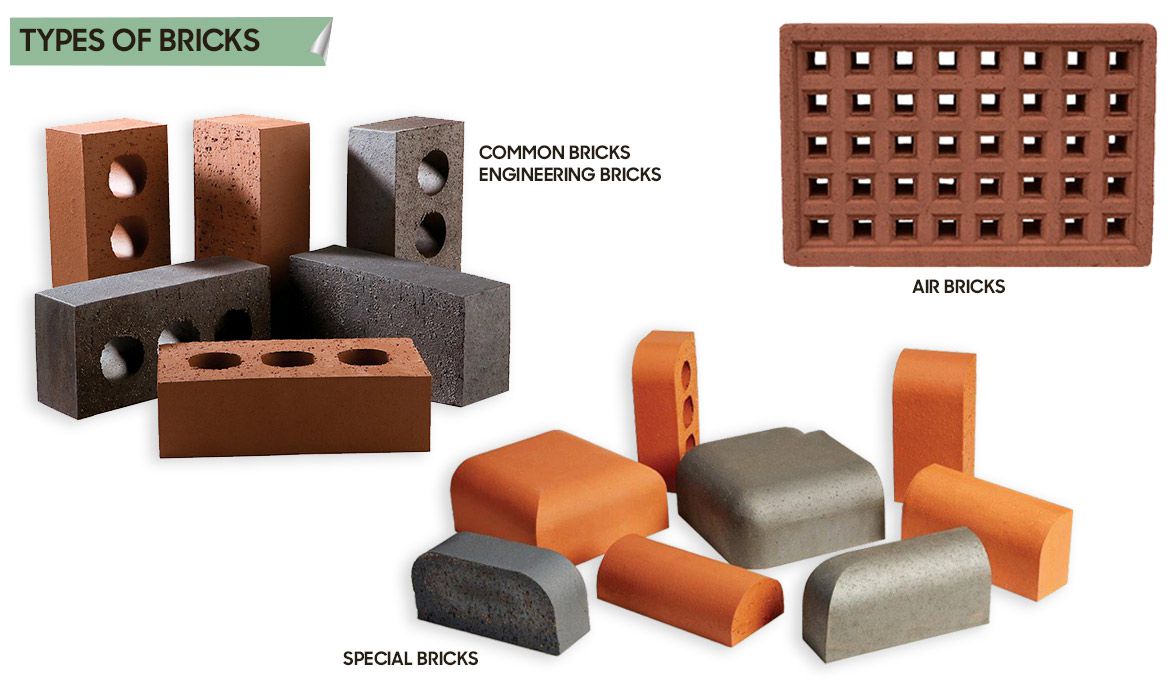Bricks: Frequently Asked Questions
We have compiled a list regarding the most commonly asked questions about brick features and uses, from engineering, air and facing to special, all from C&W Berry Ltd builders merchants.
What are Air Bricks and When Should We Use Them?
Air bricks are special bricks perforated with square holes, the holes enable air to pass through into the cavity beneath floorboards. They are sometimes called vent bricks and commonly made of terracotta clay, they are a vital source of ventilation that blends effectively with exterior brickwork.
These ventilation bricks should be located above damp course level, at least 75mm above landscaped areas to avoid them becoming blocked by leaves or garden debris and the number of vent bricks a house should would be dependent upon the size of the property.
Should Air Bricks Be Covered?
Air bricks should not be covered unless a flood is expected, when a water threat has passed the ventilation should be cleared as soon as possible to avoid build-up of damp or condensation.
It is also possible to cover holes with specialised insect or vermin mesh protector to prevent unwanted access.
Cavity walls in a building will most likely require vent bricks, the pre-formed recesses help promote airflow which assists to reduce the potential for mould and damp build up. Air bricks do not stop condensation, but they help to minimise it.


What are Engineering Bricks?
Engineering bricks are a strong, dense clay brick that are acid resistant and have low porosity for water. They significantly enhance the strength of subterranean damp proof courses, manholes and groundworks adding high compressive strength and denseness to walls.
They can be used on a wide number of projects from retaining walls to construction, below the damp proof course. The brick is usually fired at a higher temperature than standard bricks and is more water resistant, it is quite often used in the support above windows and doorways of a building.
Where are Concrete & Common Bricks Used?
Concrete & Common bricks are designed for most construction jobs and they have lower compressive strength than facing bricks. They tend to be used for internal work and are often used above doorways and for top courses of internal walls.
What are Facing Bricks?
Facing bricks are most commonly used on the façade of a building are designed to be both visibly appealing and weather resistant. They're also available in different shades and finishes to suit all styles.
Facing bricks are often fire resistant and can prevent the spread of a fire if required. Plus, clay bricks can also provide improved thermal insulation to a property. Using facing bricks can also prevent a building from rotting, warping, peeling or termite infestation.
Supplying both construction trades and DIY builders, C & W Berry provide a Matching Service in-house. A range of textures are also available with bricks from smooth to sandblasted finishes. C & W Berry stock leading manufacturers including Ibstock, Wienerberger, Hanson, and Kingscourt and colours and hues include, Antique Grey, Staffordshire Blue and Rustic Red.
What are Special Bricks?
Special bricks are preformed non-standard brick shapes, they consist of a range of different dimensions designed to create both architectural features and angles in brickwork when used alongside regular bricks.
These are available in a variety of colours for use on a wide number of projects from high rise buildings to garden walls.
Special shapes bricks can provide flexibility both aesthetics and functionality and it allows freedom to create distinctive buildings, allowing the building to have character.
Different Types of Special Bricks
Special bricks are designed to various shapes and sizes and can be used on most projects and can be cut to different sizes if needed. There are different designs of special bricks including:
- Plinth Brick External Return
- Plinth Header
- 45 Degree Squint Brick
- Plinth Stretcher
- Plinth 90 Degree Internal Return
- Single Bullnose
- Double Bullnose